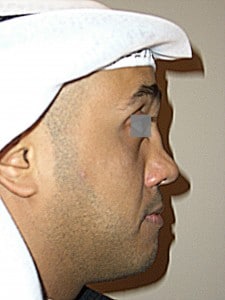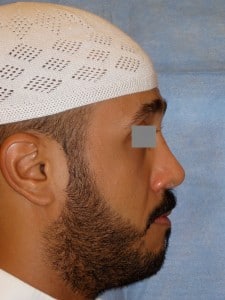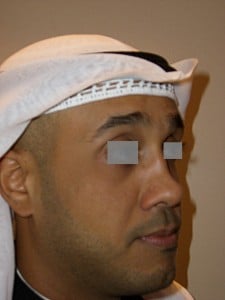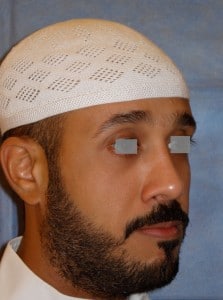|
Over the last 3 to 4 years I, as a primary and revision rhinoplasty specialist, have noticed an increasing and disturbing trend being practiced amongst those facial and classic plastic surgeons in my immediate community of Beverly Hills and other cities. This trend revolves around the use of rib grafts for not only revision but also primary rhinoplasty (!) (or in common parlance, nose job).
A good number of rhinoplasties require cartilage in order to achieve exemplary results. Cartilage is used to either build a bridge, fill depressions, augment or support the nasal tip. It is mainly harvested from the septum (that partition that exists in the midline of the nose which separates the left and right nostril) or the ear. Though I am fully trained general surgeon and am comfortable operating in and around the lungs and heart, I rarely employ rid graft as a source of cartilage. For most, it is generally a last resort when absolutely no other cartilage source is available. Admittedly, rib provides a strong support and is generally in plentiful supply. However, a number of downsides arise when rib is harvested: a permanent visible scar is created below the breast. Additionally, significant pain can arise from the harvesting as well as a small chance of creating a pneumothorax (or a collapsed lung) . Finally, rib can be notorious for warping thereby creating a nose that is crooked. Despite these drawbacks, I will use rib when there is a collapsed nasal septum (or dorsum creating a saddle nose deformity) or when plentiful cartilage is needed while other sources are exhausted. See the accompanying photos. |
|||||||||||||
|
|||||||||||||
| I always use cartilage to highlight and augment the nasal tip, however, when there is not enough cartilage present and I only need to build the bridge by a small amount, I do not hesitate to employ some artificial material such as Goretex®. I utilize this only when the chance of infection is remote. When patients are properly selected for utilizing Goretex®, the chance of infection extremely minimal in my experience. Unfortunately, the surgeons who habitually use rib grafts will scare the bejesus out of their patients into choosing the rib graft method by overstating the chance of infection and poor outcome if Goretex® is used.
So if I am writing that rib grafts are over utilized, then why do the rib graft cartel tell their patients otherwise? I feel it is simply a matter of finance. When a rib graft is harvested, the surgeon can charge a lot more for both his services and the operating room, especially if insurance is billed. Most patients will not question their surgeon’s motivated choices and indeed, feel that they have no choice at all, believing that the rib-graft-mafia method is their only solution. What is especially unsettling is that these doctors who are members of the rib graft cartel are now utilizing rib grafts for primary rhinoplasties (first time nose jobs). This is very puzzling because there is plenty of prime cartilage graft material available from the septum and ear and there is little to no reason to subject the patient to a rib surgery. All I can say is that this is a dangerous trend which introduces unnecessary risk and morbidity to the operation. A good patient is an educated patient and the purpose of my blog is to merely propagate information in the most objective way possible so that patients can make their own decisions as sentient adults. To learn more about primary and revision rhinoplasty , you can click here. Dr Randal Haworth Beverly Hills, California |
Skip to content




